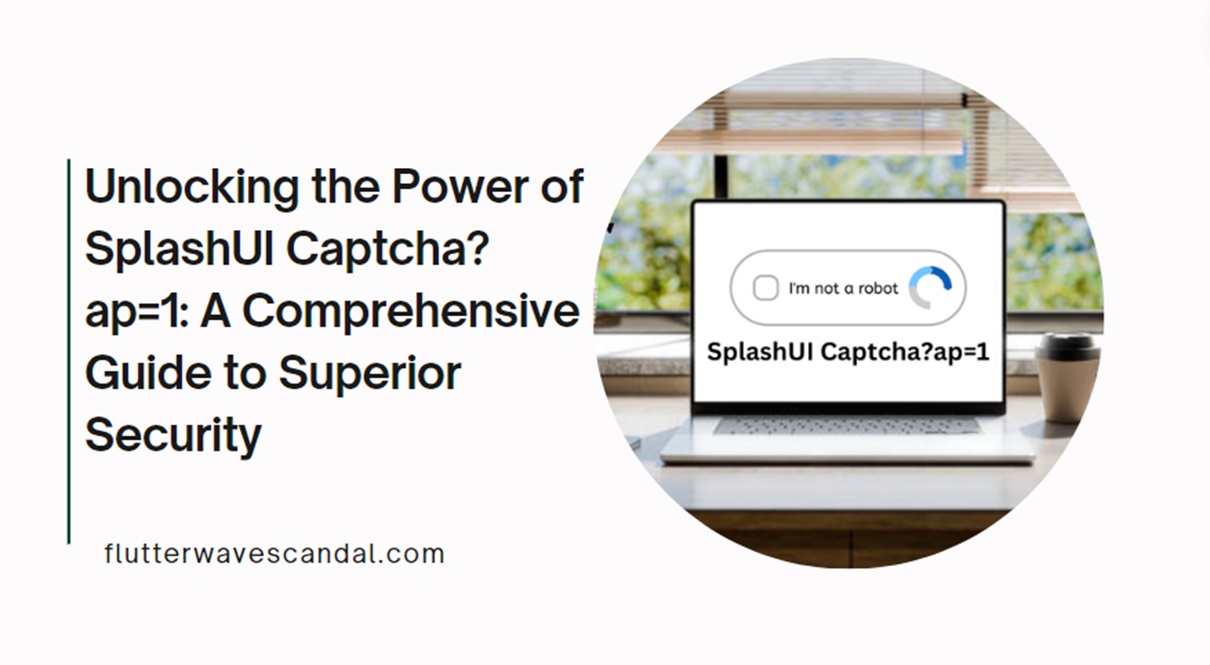
splashui captcha?ap=1
Introduction
In the ever-evolving world of online security, CAPTCHAs have become a crucial tool in safeguarding websites and applications from automated abuse. One such variant, “SplashUI Captcha?ap=1,” has gained attention for its specific functionality and implementation. This article delves into the intricacies of “SplashUI Captcha?ap=1,” exploring its purpose, features, and the role it plays in online security.
Table of Contents
What is SplashUI Captcha?ap=1?
“SplashUI Captcha?ap=1” is a specialized CAPTCHA system designed to provide an additional layer of protection against automated bots and spam. The “splashui captcha?ap=1” feature is integrated into various web applications to ensure that interactions with the system are performed by legitimate users rather than malicious bots.
The Role of CAPTCHAs
CAPTCHAs, or Completely Automated Public Turing tests to tell Computers and Humans Apart, are tools used to differentiate between human users and automated systems. The purpose of CAPTCHAs is to prevent bots from exploiting web forms, creating fake accounts, or engaging in other forms of abuse.
Introduction to SplashUI
“SplashUI” refers to a specific user interface framework that incorporates CAPTCHA technology. This framework aims to enhance user experience while ensuring robust security measures. The parameter “?ap=1” is a part of the URL that may indicate specific settings or configurations related to the CAPTCHA system.
Features of SplashUI Captcha?ap=1
The “SplashUI Captcha?ap=1” system offers several unique features that make it an effective tool for online security.
Enhanced User Experience
One of the key benefits of “splashui captcha?ap=1” is its focus on user experience. The system is designed to be user-friendly while maintaining high levels of security. It minimizes frustration by providing clear and straightforward CAPTCHA challenges that are easy for humans to solve.
Customizable Challenges
The “splashui captcha?ap=1” system allows for customizable CAPTCHA challenges. This flexibility ensures that the CAPTCHA can be tailored to suit the specific needs of different applications. Whether it’s a simple text-based CAPTCHA or a more complex image recognition test, “splashui captcha?ap=1” can be adapted to provide the necessary level of security.
Advanced Bot Detection
The “splashui captcha?ap=1” system incorporates advanced algorithms to detect and block automated bots. By analyzing user behavior and interaction patterns, the system can distinguish between genuine users and automated scripts with a high degree of accuracy.
How Does SplashUI Captcha?ap=1 Work?
Understanding how “splashui captcha?ap=1” operates can provide valuable insights into its effectiveness as a security tool.
Interaction Flow
When a user encounters a “splashui captcha?ap1” challenge, they are presented with a series of tasks designed to test their human abilities. These tasks may include identifying objects in images, solving simple puzzles, or typing distorted text. The system analyzes the user’s responses to determine whether they are a human or a bot.
URL Parameter: ?ap=1
The “?ap=1” parameter in the URL may indicate specific settings or configurations related to the CAPTCHA system. This parameter could be used to enable or disable certain features, customize the appearance of the CAPTCHA, or adjust the difficulty level of the challenges.
Benefits of Using SplashUI Captcha?ap=1
Implementing “splashui captcha?ap1” in web applications offers several advantages:
Improved Security
The primary benefit of “splashui captcha?ap1” is enhanced security. By incorporating advanced CAPTCHA technology, the system helps prevent bots from accessing and abusing web services.
User-Friendly Design
“Splashui captcha?ap1” is designed with user experience in mind. The challenges are crafted to be easy for humans to complete while remaining effective at blocking automated bots.
Customization Options
The ability to customize CAPTCHA challenges makes “splashui captcha?ap1” a versatile tool. Developers can tailor the system to meet the specific needs of their applications, ensuring that the CAPTCHA is both effective and user-friendly.
Common Issues with SplashUI Captcha?ap=1
Despite its advantages, “splashui captcha?ap1” may present some challenges.
Accessibility Concerns
Some users may find CAPTCHA challenges difficult to complete, particularly those with disabilities. Ensuring that “splashui captcha?ap1” is accessible to all users is an important consideration.
Potential for False Positives
While “splashui captcha?ap1” is designed to minimize false positives, there may be instances where legitimate users are incorrectly identified as bots. Fine-tuning the system to reduce these occurrences is an ongoing process.
Best Practices for Implementing SplashUI Captcha?ap=1
To maximize the effectiveness of “splashui captcha?ap1,” consider the following best practices:
Balance Security and Usability
When implementing “splashui captcha?ap1,” it is essential to strike a balance between security and usability. The CAPTCHA should be challenging enough to deter bots but not so difficult that it frustrates legitimate users.
Regular Updates
Keep the “splashui captcha?ap1” system updated with the latest features and improvements. Regular updates help ensure that the system remains effective against evolving threats.
User Feedback
Collect feedback from users to identify any issues or areas for improvement. This feedback can help refine the CAPTCHA challenges and enhance overall user experience.
Conclusion
“SplashUI Captcha?ap1” represents a sophisticated approach to online security, offering a user-friendly and customizable solution for preventing automated abuse. By understanding its features, benefits, and potential challenges, web developers and security professionals can effectively implement “splashui captcha?ap1” to safeguard their applications while maintaining a positive user experience.
By leveraging the advanced capabilities of “splashui captcha?ap1,” organizations can enhance their security posture and ensure that their online platforms remain protected from malicious activities.




